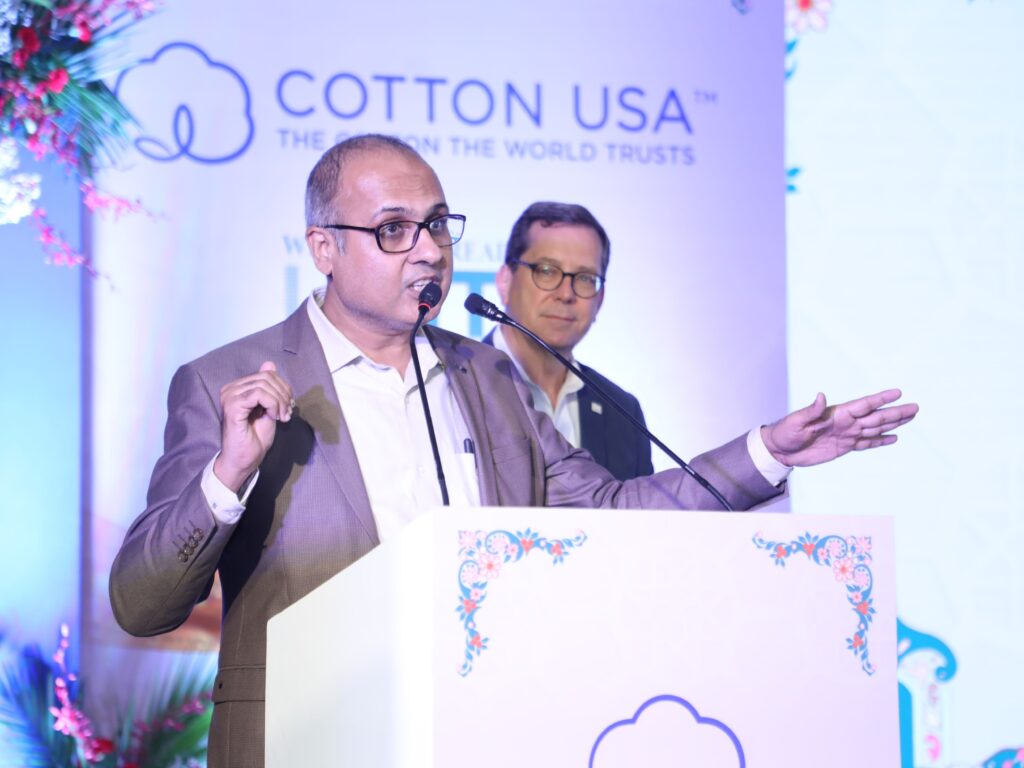
A Cotton Council International (CCI)-led media roundtable promoted strategic India-U.S. textile trade partnerships and highlighted U.S. cotton as the preferred choice of imported cotton for Indian spinners. On June 19, a three-part “COTTON USA Weaving Threads of Unity between the U.S. Cotton and Indian Textile Industry” event in New Delhi explored this partnership in more depth.
“India’s textile industry was projected to grow to $350 billion by 2025, and as India was a key market for U.S. cotton, there was substantial opportunity to expand our cooperation,” CCI Executive Director Bruce Atherley said. “Our discussions emphasized the strategic importance of this partnership in driving sustainable practices and economic growth in both countries.”

To further this agenda at its COTTON USA event, CCI met with U.S. Embassy personnel and joined five top Indian textile manufacturers, the U.S. Cotton Trust Protocol, Supima, and other global cotton textile supply chain luminaries to discuss topics of mutual interest and chart a path of cooperation moving forward. The event also featured a high-level panel discussion on “Celebrating Women’s Influence in the Fashion and Textile Industry.”
While India had picked up the pace in textile exports, registering a growth of 6.91% year-on-year in March, its ambitious target of $100 billion in textile exports by 2030 required collaborative action and robust international trade pathways. The discussions highlighted opportunities for synergy between U.S. cotton and Indian stakeholders and charted a roadmap for an efficient and profitable partnership between the U.S. and India that empowered Indian spinners, textile mills, and manufacturers to achieve these goals.
“India’s impressive textile manufacturing ecosystem was energized with expansion opportunities, and we at Supima were excited about the partnership prospects that could arise out of this growing industry,” Supima President and CEO Marc Lewkowitz said. “The increasing demand for premium quality verifiable SUPIMA® cotton highlighted the need for scaling production to meet global needs.”

Peush Narang, CCI’s program representative in India and Sri Lanka, added, “Our valuable partnership with the Indian textile industry propelled both industries; by using U.S. cotton, Indian textile manufacturers could not only meet global quality standards but also enhance their competitive edge in the international market. Indian textile manufacturers were using high quality U.S. cotton fiber to create beautiful garments. And by using U.S. cotton, they also received benefits of the entire COTTON USA experience—including full traceability of the supply chain, the unique COTTON USA SOLUTIONS technical servicing program, and a package of services, data, and intelligence—which no other cotton could provide.”